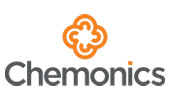
Inclusive Language and Imagery Guide
Challenge
In 2020 Chemonics leadership recognized the need for guidance to support staff on speaking, writing, and producing more inclusive communication materials. In determining how best to respond to this need, Chemonics, a global company, was cognizant that language, word choice, and visual imagery have an enormous impact on an overall message and are also greatly influenced by local context, culture, and nuances within different languages. A key challenge was developing guidance for writers and communicators on how best to write and communicate inclusively within their own specific country and cultural context and guide their own decision-making around word choice and messages that support greater inclusivity.
Actions
Recognizing that it would be impossible to create communications guidelines that incorporate all types of individual experiences, a Chemonics team sought to develop principles and considerations to help staff make informed decisions about different approaches to communicate inclusively and sensitively within their country and cultural context. To do so, the team used a collaborative process that involved engaging key stakeholder groups from across the company, including members of the Diversity, Equity, and Inclusion (DEI) constellation, executive leadership, employee resource groups with specialized knowledge of DEI issues, communication specialists and teams, and members of the global workforce based in corporate and project offices across the globe.
The result of this inclusive, collaborative process was the creation of the Chemonics Inclusive Language and Imagery Guide. The guide is based on agreed-upon, founding principles on how Chemonics values communicating inclusively, including:
· Using ‘people-first’ communications where possible;
· Using language that unites, not divides;
· Being specific in identifying particular groups or individuals’ identities;
· Avoiding jargon; and
· Being mindful of using expressions and idioms from the writer’s own culture that may not translate into other colleagues’ cultures or contexts.
The Guide is not focused on telling communicators how best to write inclusively in every situation but on helping writers and communicators incorporate self-reflective measures into their process that encourage asking difficult questions and making difficult decisions to ensure the production and disbursement of inclusive communications.
Outcomes
The Inclusive Language Guide is now available as a living document for the Chemonics global workforce to utilize, adapt, and iterate to support more inclusive written and communication products in the countries we work in across the globe.
Contact
Kenya Dugger, Senior Advisor and Director, Diversity, Equity and Inclusion